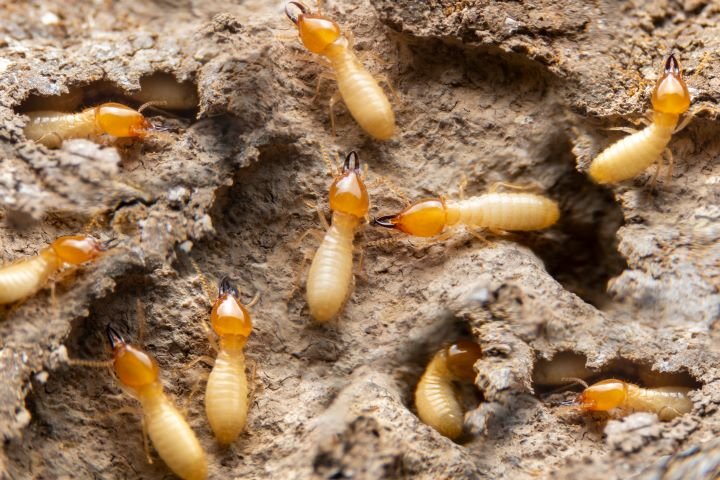Termite treatments
SUBTERRANEAN TERMITE TREATMENT
While fumigation is considered one of the most comprehensive termite treatments for heavily infested structures, subterranean termite infestations require a different approach. Since subterranean termite colonies live in the soil, the best termite treatment is to apply termiticide formulated with termite treatment chemicals to surrounding and adjacent soil to create a barrier.
First, a trench is dug around the foundation, piers, and other areas, and we treat the soil with a low-toxicity yet proven termiticide. We fill the trench back in, and the termiticide absorbs into the ground to kill termites when they cross through the barrier to return to the nest.
For buildings constructed on a concrete slab, it may be necessary to drill through the slab to treat the soil below for effective subterranean termite control. Whether your building has a slab, basement, or crawl space, our specialized equipment ensures the entire structure is professionally treated against termite attacks.
Preventative Termite Treatments
Preventative termite treatments involve fending off termites before they infest and damage the structure. This may involve pre-treating the perimeter of a home with Altriset or a similar product for subterranean termite control when conditions next to the foundation attract termites. For example, bark or moisture near the perimeter can attract subterranean termites. By treating the soil next to the foundation, you can prevent a future termite infestation.
In addition, preventative treatments may involve spraying raw wood in attic spaces. Treatment will focus on areas where raw wood is accessible around air vents, down the ridge of the roof, and on roof sheathing.
The termite inspection report will alert homeowners to conditions that are conducive to infestation (which involves termites or other wood-destroying organisms) or infection (which involves dry rot). For example, excessive moisture from plumbing leaks or other sources is something that can lead to infestation or infection. Preventing excessive moisture is another means to prevent termite infestations.
We may also recommend modifications to the building or landscaping to improve the effectiveness of termite control and reduce the threat of further termite attacks. For example, we may suggest the removal of timbers adjacent to the house or in contact with the soil. Mulch that contacts the structure should also be removed because it provides termites with an easy food source, a humid environment, and plenty of cover to inflict damage.





